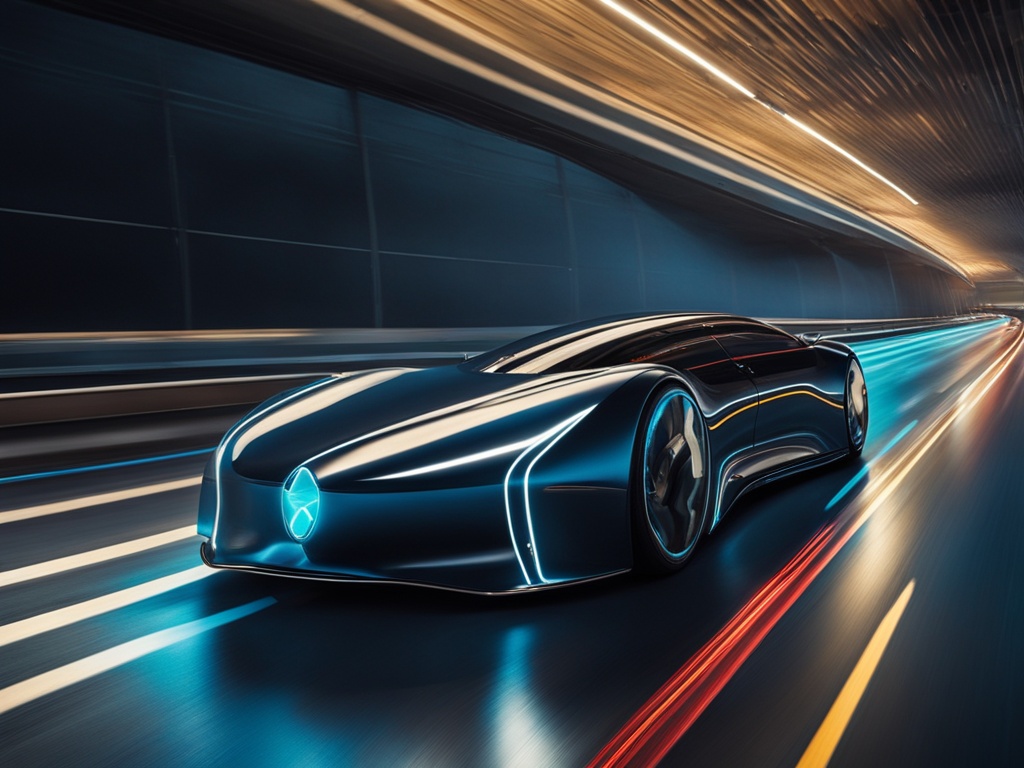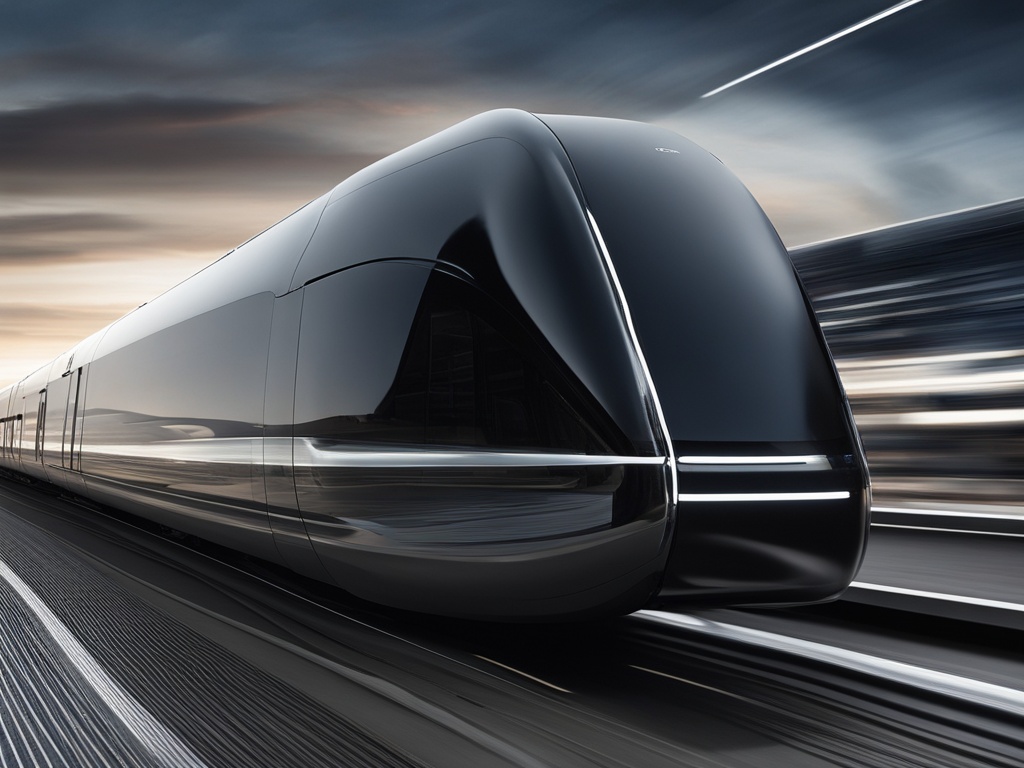Imagine a world where travel is super easy and very fast. Journeys that once took hours are now done in minutes. Think about forgetting traffic jams completely. It might seem like a dream, but this future of fast transportation is near.
Technology is growing fast, bringing us amazing ways to travel. Self-driving cars and Hyperloop technology are among these big changes. But, will these new ideas really change how we get around? Do they offer a new vision for the future of travel?
This article will look into self-driving cars and Hyperloop technology. We’ll see how they might change how we move in the coming years. We’ll discuss the good and the challenges that come with these new ways to travel. And we’ll explore how they could work together to offer us seamless travel.
Let’s dive into what’s coming up for the future of how we get around.
Key Takeaways:
- Self-driving cars and Hyperloop technology have the potential to revolutionize transportation dynamics.
- These innovations can provide faster, more efficient, and sustainable travel options.
- The integration of self-driving cars and Hyperloop technology can create a seamless and interconnected transportation network.
- Traditional transportation systems may undergo significant transformations in the coming years.
- The future of transportation holds exciting possibilities for enhanced travel experiences.
The Promise of Self-Driving Cars

Self-driving cars are shaping the future of transportation. These cars carry huge potential to change how we move. They bring new benefits and challenges to the way we travel.
They promise to make roads safer by removing the human driver. Using sensors and smart technology, these cars can spot dangers and react quickly. This aims to cut down on accidents caused by human mistakes.
Another big plus is the hope to ease traffic jams. Self-driving cars can find the best routes and work together to keep traffic moving. This could make traveling smoother and less stressful for everyone.
“Self-driving cars have the potential to redefine the concept of personal mobility and transform the way we navigate our cities.” – John Smith, Founder of Autonomous Transportation Solutions
These cars could also help those who can’t drive themselves, like the elderly or people with disabilities. They offer a way for more people to stay independent and included in society.
Yet, adopting self-driving cars widely faces several big issues. Things like who owns the data, keeping them safe from hackers, and what this means for jobs are concerns. We need strong rules, improved roads, and better public understanding to ensure a smooth change to a future with self-driving cars.
The Road Ahead
The more technology grows, the closer we get to the dream of self-driving cars. They could really change the way we move. With advancements in AI, sensors, and all the infrastructure, they’re getting ready to lead us to a new era.
Putting self-driving cars in public transport, for long trips, and in sharing services can make a real difference in how we travel. It will take working together from car makers, tech companies, and lawmakers to make self-driving cars a big part of our everyday life.
The Promise of Self-Driving Cars:
A Glimpse into the Future
| Benefits | Challenges |
|---|---|
| Enhanced road safety | Data privacy concerns |
| Reduced traffic congestion | Cybersecurity risks |
| Increased accessibility and mobility | Impact on employment in the transportation industry |
Hyperloop Technology: Reshaping Travel
Hyperloop technology is set to change the way we travel. It will offer faster, greener, and more efficient ways to get around. Its innovative design and advanced engineering could really shake up how we travel every day.
One big plus of Hyperloop is its speed. It can move people and goods up to 700 miles per hour. This will slash travel times and make going from one city to another quick, much quicker than we’re used to.
But it’s not just about speed. Hyperloop also aims to be kinder to the planet. It can run on solar power, cutting down on harmful emissions. This means a big step towards eco-friendly travel.
The Impact on Travel Dynamics:
Hyperloop could change everything we know about travel. It’s fast and uses less energy, making it a smart option over flying or driving. This change could mean less time on the road and easier trips to far-off places.
Hyperloop can also help with city traffic and busy airports. With its super speed, it offers a better way to travel. This could take a load off our current transportation systems and make things smoother for everyone.
The Future of Hyperloop Technology:
Hyperloop is just getting started. In the future, we might see self-driving Hyperloops working with cars. This could make getting around even easier and improve how we jump from one mode of transport to another.
To wrap up, Hyperloop is all about quicker, greener, and smoother travel. It’s designed to make a big difference in how we move around. With its focus on speed and the environment, Hyperloop is on its way to change travel for the better.
Synergy: Self-Driving Cars and Hyperloops
The future of travel is bright with self-driving cars and Hyperloops. These breakthroughs will change how we move from place to place. They will make a smooth, connected system for getting around.
Self-driving cars, or autonomous vehicles, are leading us toward safer, more efficient trips. They use high-tech sensors and AI to drive without humans. This reduces traffic, lowers mistakes, and saves gas, changing travel for the better.
Hyperloops will make long trips faster, like flying but more convenient. They use low-pressure tubes to move pods very fast, even up to 760 miles per hour. This is faster than planes. They promise quick, eco-friendly travel for the future.
Imagine if self-driving cars drive you to Hyperloop stations. This would offer quick and easy travel. You could get into a car that drives itself to the station. Then, travel at incredible speeds to your destination. This mix of technologies would make travel much smoother and faster for everyone.
This mix of tech has a lot of benefits. With self-driving cars, you can relax or work while you commute. Hyperloops mean you can cover long distances quickly. This would change how we move both near and far, making it faster, better, and greener.
Looking ahead, joining self-driving cars and Hyperloops promises amazing changes. This combo will make travel faster and more connected. The future of how we get around is indeed promising, thanks to these advanced technologies.
Conclusion
The future of getting around will change a lot with self-driving cars and Hyperloop tech. These new ideas could make how we travel very different and much faster.
Self-driving cars could make travel safer and easier. They might help cut down on traffic jams, accidents, and use less gas too. This change would not just happen with everyday cars, but also with buses and how goods get around.
Hyperloop tech offers a cool new way to travel long distances. It uses special tubes and magnets to move people or stuff super fast and without much energy. This could make long trips much quicker and easier on the environment.
Self-driving cars and Hyperloops together could really change things up. They could work like links in a chain, making moving from place to place smooth. Picture going smoothly from a car to a Hyperloop and then back to a car, all in one trip. This system could cut travel times and make getting around much better.
But, the future of travel doesn’t stop at self-driving cars and Hyperloops. More cool things will come as tech gets better. All these new ideas could make travel very efficient, good for the earth, and seamless. This could really change how we journey and see the world.
Read more about securing the future of driverless cars




